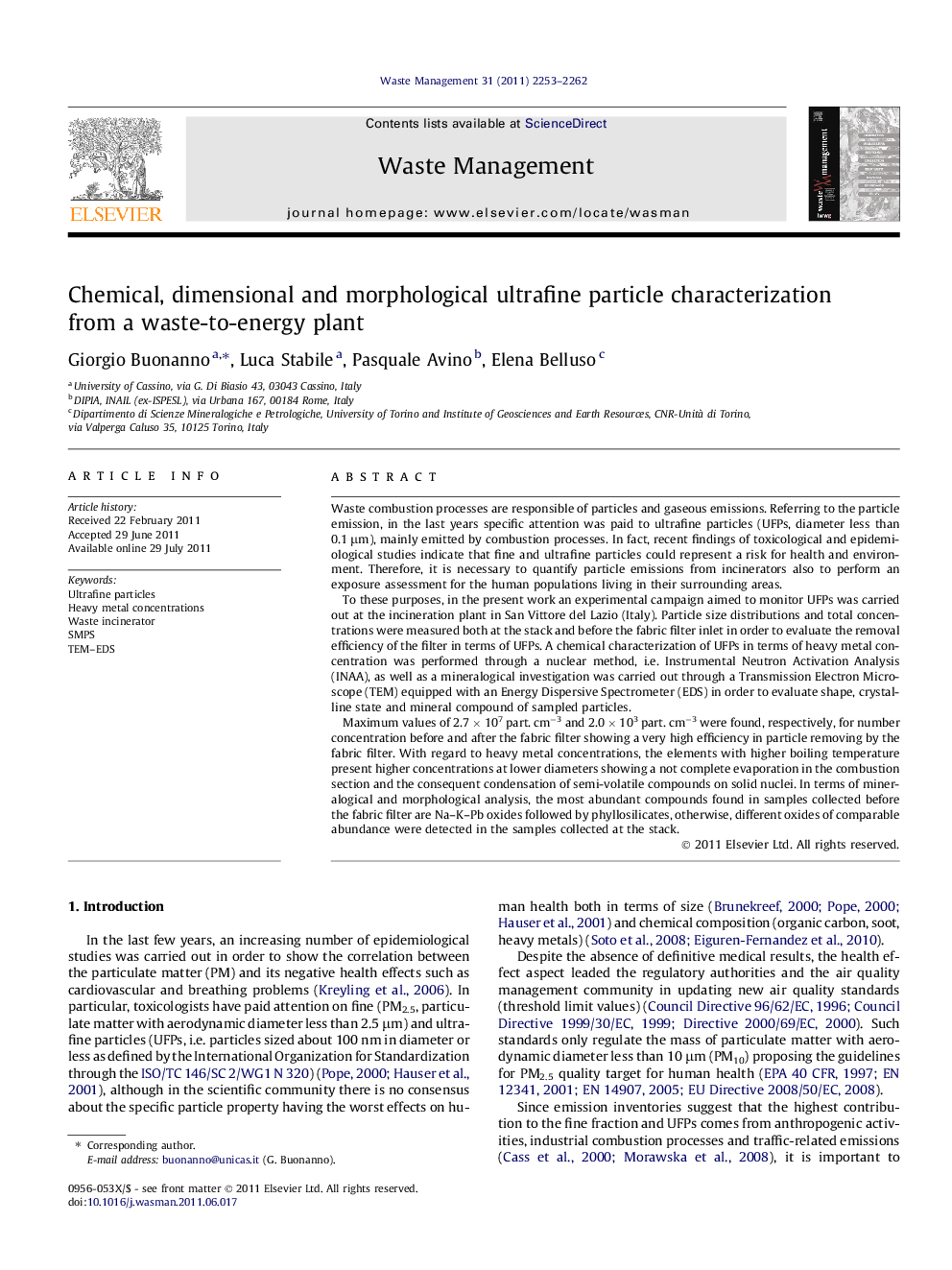| کد مقاله | کد نشریه | سال انتشار | مقاله انگلیسی | نسخه تمام متن |
|---|---|---|---|---|
| 4472429 | 1315068 | 2011 | 10 صفحه PDF | دانلود رایگان |

Waste combustion processes are responsible of particles and gaseous emissions. Referring to the particle emission, in the last years specific attention was paid to ultrafine particles (UFPs, diameter less than 0.1 μm), mainly emitted by combustion processes. In fact, recent findings of toxicological and epidemiological studies indicate that fine and ultrafine particles could represent a risk for health and environment. Therefore, it is necessary to quantify particle emissions from incinerators also to perform an exposure assessment for the human populations living in their surrounding areas.To these purposes, in the present work an experimental campaign aimed to monitor UFPs was carried out at the incineration plant in San Vittore del Lazio (Italy). Particle size distributions and total concentrations were measured both at the stack and before the fabric filter inlet in order to evaluate the removal efficiency of the filter in terms of UFPs. A chemical characterization of UFPs in terms of heavy metal concentration was performed through a nuclear method, i.e. Instrumental Neutron Activation Analysis (INAA), as well as a mineralogical investigation was carried out through a Transmission Electron Microscope (TEM) equipped with an Energy Dispersive Spectrometer (EDS) in order to evaluate shape, crystalline state and mineral compound of sampled particles.Maximum values of 2.7 × 107 part. cm−3 and 2.0 × 103 part. cm−3 were found, respectively, for number concentration before and after the fabric filter showing a very high efficiency in particle removing by the fabric filter. With regard to heavy metal concentrations, the elements with higher boiling temperature present higher concentrations at lower diameters showing a not complete evaporation in the combustion section and the consequent condensation of semi-volatile compounds on solid nuclei. In terms of mineralogical and morphological analysis, the most abundant compounds found in samples collected before the fabric filter are Na–K–Pb oxides followed by phyllosilicates, otherwise, different oxides of comparable abundance were detected in the samples collected at the stack.
► Particle size distributions and total concentrations measurement at the stack and before the fabric filter of an incinerator.
► Chemical characterization of UFPs in terms of heavy metal concentration through a nuclear method.
► Mineralogical investigation through a Transmission Electron Microscope equipped with an Energy Dispersive Spectrometer.
► Heavy metal concentrations on UFPs as function of the boiling temperature.
► Different mineralogical and morphological composition amongst samples collected before the fabric filter and at the stack.
Journal: Waste Management - Volume 31, Issue 11, November 2011, Pages 2253–2262